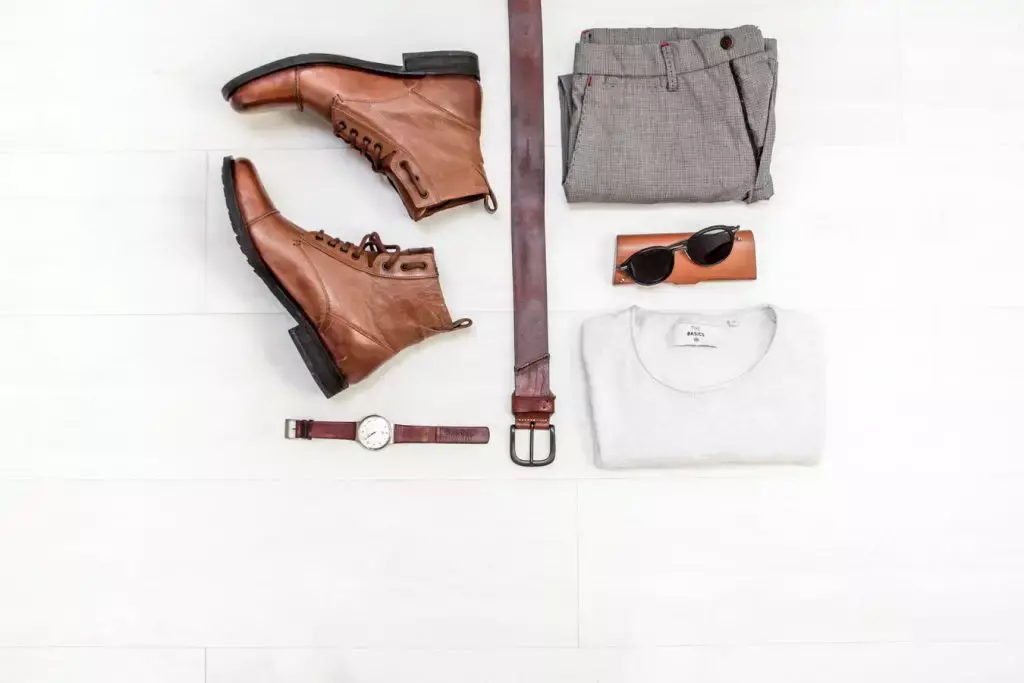In the captivating world of architecture, what do architects wear? How can you dress like an architect or an architecture student? These questions have been pondered by many, as the fashion choices in this industry are as diverse as the buildings they design. Join us as we explore the fascinating realm of architectural fashion and offer some valuable insights.
Dressing to Impress: The Architect's Uniform
 What do Architects Wear?
What do Architects Wear?
Gone are the days when architects were exclusively associated with the all-black turtleneck stereotype. Today, architecture fashion embraces eccentric bold colors, well-designed suits, and a fairly relaxed dress code. While it's tempting to adopt the all-black look, it's best to avoid it unless you can masterfully combine various tones. Trust us, you don't want to look like you're heading to a fancy dress party!
Dressing for Success: How Should Architects Dress
As architects, our roles are multifaceted - we are designers, artists, managers, businessmen, and more. Our attire should convey our professionalism and competence to clients, directors, peers, and consultants. The way we dress reflects our performance and can make a lasting impression, especially during initial meetings.
 Architect Attire
Architect Attire
When it comes to dressing like an architect, it's crucial to aim for a timeless and consistent style. Architectural fashion should embody good quality, well-considered clothing that reflects the enduring nature of our work. Remember, our appearance contributes to the culture and reputation of our practice. By presenting ourselves in a well-groomed and appropriate manner, we inspire confidence in our aesthetic abilities.
Dressing for the Occasion: Office Etiquette
Every office has its own dress code, which can range from formal to informal. Most architecture studios lean towards a smart casual dress code, with occasional requirements for more formal attire during important meetings. It's important to comply with your office's dress expectations, as your appearance influences how you are perceived and treated in the professional environment.
As architects, we should dress for the job we want. Just as we wouldn't see our directors donning baggy jeans and old converse trainers, we should strive for a professional appearance. Our grooming and dress sense play a crucial role in leaving a favorable impression on clients, consultants, and fellow staff members.
First Impressions Matter
First impressions are everything, especially in the world of architecture. As designers of functional and aesthetically pleasing structures, it's essential that we dress to reflect our creativity and style-consciousness. Avoid the temptation to wear un-ironed shirts, baggy jumpers, or hoodies to work. Your clothing choices should exude professionalism and demonstrate your qualifications as a designer.
 Architect Dress Code
Architect Dress Code
Similarly, when meeting clients, it's crucial to convey confidence and professionalism. Dressing too smart is always preferable to not dressing smart enough. Make a strong first impression by projecting an image of someone who is confident, knowledgeable, and stylish - characteristics that make you a desirable collaborator.
Dressing the Part: Architectural Fashion Tips
Everyday Office Wear for Architects
In the office, architects often opt for business casual attire. This allows for a professional look without sacrificing comfort, considering the long hours spent at work. Here are some popular choices:
- The Black & White: This classic combination of black, white, and grey tones offers a professional and minimalist look.
- Pattern & Khaki: For a slightly more casual yet professional appearance, consider pairing patterned shirts with khaki pants. This allows your personality to shine through while maintaining an air of professionalism.
Dressing for Client Meetings and Presentations
When meeting clients or giving presentations, architects often dress more formally to project confidence and professionalism. Consider these tips:
- Suits and Ties: A well-tailored suit paired with a conservative tie can make a strong impression. Women can add a unique accessory or a smart blouse to blend formality with personal style.
- Accessorizing: Choose accessories that complement your outfit without overpowering it. A statement watch or a subtle piece of jewelry can add a touch of personality.
On-Site Attire for Architects
On construction sites, practicality and safety take precedence. Your attire should reflect these needs:
- Safety Gear: Make sure to wear hard hats, safety vests, and steel-toe boots that prioritize safety while adhering to site regulations.
- Functional Clothing: Opt for durable jeans and breathable shirts that provide comfort and resilience in the on-site environment.
Expressing Individuality Through Clothing
As designers, architects often showcase their creativity through their fashion choices. Here are some ways to express your individuality:
- Unique Elements: Incorporate unique design elements or textures to subtly demonstrate your creative flair.
- Color Choices: While neutral tones are common, adding a pop of color can tastefully make your outfit stand out.
What Not to Wear: Avoiding Common Mistakes
In professional settings, architects should avoid certain fashion faux pas:
- Overly Casual Wear: Shorts, flip-flops, or overly distressed clothing can be seen as unprofessional.
- Too Much Attention: Outfits that are excessively loud or attention-seeking might not be suitable for professional environments.
Seasonal Considerations in an Architect's Wardrobe
An architect's wardrobe should adapt to changing seasons while maintaining professionalism:
- Layering for Cold Weather: Incorporate turtlenecks under blazers to stay warm and stylish.
- Summer Attire: Opt for lighter materials and breathable fabrics to maintain comfort without compromising professionalism.
Sustainable and Ethical Fashion in Architecture
Architects are increasingly aware of the impact of their fashion choices on the environment. Consider these sustainable fashion practices:
- Eco-friendly Choices: Select brands that use sustainable materials and ethical manufacturing processes, showcasing your commitment to sustainability.
- Second-Hand and Vintage: Embrace second-hand or vintage pieces to showcase your unique style while being environmentally conscious.
How to Dress Like an Architecture Student
Contrary to popular belief, architecture students don't wear black every day either. While college and university dress codes tend to be more casual, it's still essential to demonstrate your design consciousness and aesthetic expertise. Quality, long-lasting clothing is crucial, even with a limited budget. Representing your work in the best possible light includes choosing appropriate attire, especially for presentations.
FAQs About What Architects Wear
What color do architects wear?
Architects, like professionals in any field, are not limited to specific colors. Clothing choices often depend on personal style, workplace culture, and specific meetings or site visits. In a traditional office environment, architects lean towards business casual attire, which can include a wide range of colors. Construction site visits prioritize safety, often requiring bright, high-visibility gear. The stereotype of architects wearing all black is just that - a stereotype that doesn't reflect the reality of every architect's wardrobe choices.
In conclusion, architecture fashion is a vibrant and diverse world that allows architects to express their creativity while maintaining a professional image. By following the appropriate dress code for your workplace, you can leave a lasting impression, gaining the confidence and trust of clients, directors, and peers. Whether you're a seasoned architect or an aspiring student, your fashion choices can enhance your personal brand and set you apart in the architectural realm.









